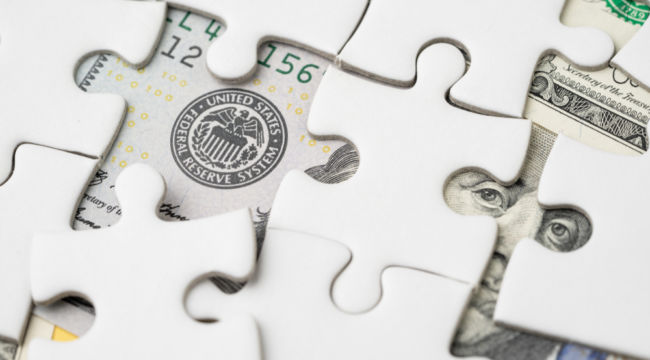REVEALED: The Fed’s “Real” Plans
What if you were with a select group in a closed-door “off the record” meeting with top Federal Reserve and European Central Bank (ECB) officials who told you exactly what you can expect with interest rates over the next six months — and why?
Well, I was recently present for such a meeting in Bretton Woods, New Hampshire.
I was there, along with a host of monetary elites, to commemorate the 75th anniversary of the Bretton Woods conference that established the post-WWII international monetary system — and to try to determine the future of the monetary system.
Chatham House rules apply, so I can’t reveal the names of anyone present at this particular meeting or quote them directly.
But these were some very high-ranking officials with the Fed and the ECB. They included a senior official from a regional Federal Reserve bank, a senior official from the Fed’s Board of Governors and a member of the ECB’s Board of Governors.
Normally forecasting interest rate policy can be tricky, and I use a number of sophisticated models to try to determine where it’s heading. But these guys made my job incredibly easy.
They came out and announced that rates are heading lower, and not by just 25 or 50 basis points. They said they have to cut interest rates by a lot going forward.
They didn’t officially announce that interest rates will go negative. But they said that when rates are back to zero, they’ll have to take a hard look at negative rates.
Reading between the lines, they will likely resort to negative rates when the time comes.
The most interesting part of the meeting was the reason they gave for the coming rate cuts. They were very relaxed about it, almost as if it was too obvious to even point out.
The reason has to do with real interest rates.
The real interest rate is the nominal interest rate minus the inflation rate.
You might look at interest rates and think they’re already extremely low. But when you consider real interest rates, you’ll see that they’re substantially higher.
That’s why the real rate is so important. If you’re an economist or analyst trying to forecast markets based on the impact of rates on the economy, then you need to focus on real rates.
Assume the nominal rate on a bond is 4%; what you see is what you get. But the real rate is the nominal rate minus inflation. If the nominal rate is 4% and inflation is 2%, then the real rate is 2% (4 – 2 = 2).
That difference between nominal and real rates seems simple until you get into a strange situation where inflation is higher than the nominal rate. Then the real rate is negative.
For example, if the nominal rate is 4% and inflation is 5%, then the real rate of interest is negative 1% (4 – 5 = -1).
The U.S. has never had negative nominal rates (Japan, the eurozone and Switzerland have), but it has had negative real rates.
By the early 1980s, nominal interest rates on long-term Treasury securities hit 13%. But inflation at the time was 15%, so the real rate was negative 2%. The real cost of money was cheap even as nominal rates hit all-time highs.
Nominal rates of 13% when inflation is 15% are actually stimulative. Rates of 3% when inflation is 1% aren’t. In these examples, nominal 2% is a “high” rate and 13% is a “low” rate once inflation is factored in.
The situation today is much closer to the latter example.
The yield to maturity on 10-year Treasury notes is currently around 1.5%, the lowest since July 2016 and nearly a record low. Meanwhile, inflation as measured by the PCE core deflator (the Fed’s preferred measure) is currently about 1.5% year over year.
Using those metrics, real interest rates are about zero — but higher than the early ’80s when real rates were -2%.
The central banks want to drive real rates meaningfully negative. And that’s why they have to lower the nominal rate substantially, which is what these central bank officials said at Bretton Woods.
So you can expect rates to go to zero, probably sooner or later. Then, nominal negative rates are probably close behind.
Of course, negative nominal interest rates have never worked where they’ve been tried. They only fuel asset bubbles, not economic growth. There’s no reason to believe they’ll work next time. But the central banks really have no other tools to choose from. When your only tool is a hammer, every problem looks like a nail.
The bottom line is get ready for a steady diet of rate cuts over the next six months or longer. Remember, this information comes right from the horses’ mouths.
Now’s the time to stock up on gold and other hard assets to protect your wealth.
Below, I show you why you who’s primarily responsible for our current predicament. Who is it? Here’s a hint: It’s not Jay Powell. Read on.
Regards,
Jim Rickards
for The Daily Reckoning



Comments: